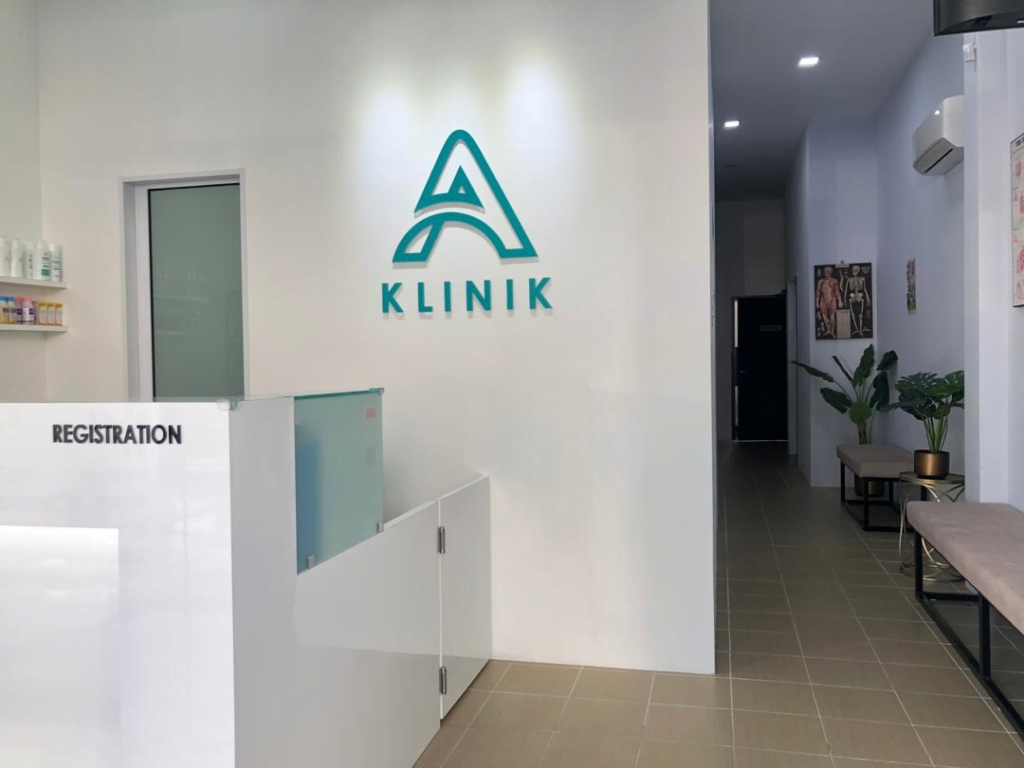
When considering knee gel injections versus knee PRP therapy, you may find yourself wondering which option offers the most effective relief for your knee pain. Since A Klinik offers both options to ease knee pain, we want to make sure that you can make an informed decision. By exploring various cost considerations and clinical trial findings, you’ll gain valuable insights to help you determine the optimal choice for addressing your knee issues.
Treatment Mechanisms
Essentially, how does each treatment method work?
Platelet-Rich Plasma (PRP) injections and Hyaluronic Acid (HA) injections operate through distinct mechanisms to address knee pain and joint health. Both treatments have been medically offered and researched for decades, but new studies place PRP injections as a better conservative option for knee degeneration to provide symptomatic relief.
Knee Gel Injections (Hyaluronic Acid)

HA acts as a lubricant, reducing friction and improving joint function temporarily. On the other hand, PRP promotes tissue repair by releasing growth factors, potentially offering more significant and longer-lasting pain relief compared to HA.
HA injections work by supplementing the natural hyaluronic acid found in joint fluid. This substance acts as a shock absorber and lubricant, crucial for smooth joint movement. By injecting additional HA, friction and pain in the joints are reduced, allowing for improved mobility and decreased discomfort. However, the effects of HA injections are temporary, requiring repeated treatments for sustained pain relief.
Knee PRP Injections (Platelet-Rich Plasma)
In contrast, PRP injections harness the healing components naturally present in the blood. By concentrating platelets containing essential growth factors through a centrifugation process, PRP is rich in healing properties necessary for tissue regeneration.
When injected back into the affected joint, the high concentration of growth factors promotes tissue repair and healing, potentially providing longer-lasting pain relief compared to HA injections. Overall, PRP injections offer a more holistic approach to knee pain management by not just addressing symptoms but also promoting tissue healing and regeneration.
Side Effects and Risks
When undergoing knee gel injections or PRP therapy, you may experience common post-injection symptoms such as swelling, pain, and bruising. These side effects are typically mild and resolve on their own within a few days.
Severe complications from both treatments are rare but can include infections, allergic reactions, or nerve damage. It’s crucial to seek immediate medical attention if you experience intense pain, excessive swelling, or signs of infection such as fever or warmth around the injection site.
Allergic reactions to the substances used in knee gel injections or PRP therapy are uncommon but should be monitored closely, especially if you have a history of allergies. To minimize risks, it’s essential to choose healthcare providers who follow proper injection techniques and adhere to strict sterile protocols.
Following post-procedure care instructions, such as avoiding strenuous activities or applying ice to reduce swelling, can also help prevent complications. Remember to report any unusual symptoms promptly to our doctors. By staying proactive about your post-injection care, you can ensure a smoother recovery process after undergoing knee injections.
Cost Considerations
Consider the financial implications when evaluating knee gel injections versus PRP therapy for potential treatment of knee pain.
While the immediate cost of HA injections may seem more affordable, it’s essential to weigh the long-term financial considerations. PRP therapy, despite being more expensive upfront, has the potential to reduce the need for invasive procedures in the future, leading to potential cost savings over time.
Moreover, prices for both treatments may vary depending on the location and clinic, emphasizing the importance of comparing quotes and considering the expertise of healthcare providers over cost alone.
Therefore, when making a decision between knee gel injections and PRP therapy, it’s crucial to factor in not just the immediate costs but also the potential long-term savings and benefits each treatment option may offer in managing knee pain effectively.
Individual Factors to Select the Right Knee Treatment

Choosing between knee gel injections and PRP therapy depends on individual factors such as your knee condition severity, lifestyle, and financial considerations.
If you have mild to moderate knee pain or are looking for short-term relief, knee gel injections (Hyaluronic Acid) may be a suitable option. Since gel injections replenish the lubricant in the synovial fluid of the joint, it can show immediate improvements for milder cases of knee pain.
On the other hand, if you’re experiencing more severe knee issues, seeking long-term pain relief, or aiming for tissue repair, PRP therapy might be more beneficial. Platelet-Rich Plasma injections promote tissue healing and release growth factors that could lead to significant and lasting pain relief compared to knee gel injections.
Active individuals or those with demanding lifestyles may lean towards PRP for its potential long-term benefits, while individuals seeking quick symptom relief could opt for knee gel injections.
Additionally, considering financial aspects is crucial as knee gel injections are generally more affordable upfront, while PRP therapy might involve higher initial costs but potentially lead to long-term cost savings by reducing the need for invasive procedures.
Consulting with a healthcare provider to evaluate your specific needs and goals is essential in determining the most suitable treatment option.
Clinical Trial Findings
Clinical trial findings provide valuable insights into their outcomes for knee pain management. In a randomized controlled trial evaluating PRP and HA injections for knee degenerative disease, both treatments were effective in improving knee functional status and symptoms over time. The study assessed patients based on subjective scores, visual analog scales, and more.
Comparison Studies of HA Injections and PRP Injections
Comparison studies have analyzed the effectiveness of knee gel injections and PRP therapy in managing knee pain, providing valuable insights into their respective outcomes. These studies aim to compare the efficacy of Hyaluronic Acid (HA) gel injections and Platelet-Rich Plasma (PRP) therapy in treating knee osteoarthritis.
Prospective, double-blind randomized controlled trials have been pivotal in comparing the outcomes of HA versus PRP for knee osteoarthritis. These trials provide essential data on the subjective and objective measures of treatment efficacy, offering valuable information for healthcare providers and patients.
The results of these comparison studies show that both HA and PRP injections are effective in improving knee functional status and symptoms over time. However, PRP didn’t demonstrate overall superior clinical improvement compared to HA in the treatment of knee degenerative disease.
Additionally, the commentary suggests that intra-articular injections of PRP and HA didn’t significantly differ concerning clinical scores or duration of effect. However, PRP was found to be effective specifically for patients with knee osteoarthritis. This implies that while both treatments show efficacy in improving knee functional status and symptoms over time, PRP may offer additional benefits for individuals with this specific condition.
While both interventions aim to alleviate pain and enhance joint function, the suitability of PRP for knee osteoarthritis patients underscores the need for personalized treatment approaches. Understanding how each treatment modality impacts clinical outcomes can aid healthcare providers in making informed decisions tailored to individual patient needs.
Combining Gel Injections and PRP Injections
A mixed modality treatment plan has been similarly researched to get the best of both worlds. The concept goes: a combination of platelet-rich plasma and hyaluronic acid that is chemically similar to natural joint fluid is injected into the joint. These shots put more HA into your joint, increasing lubrication and also reducing inflammation,while PRP will ensure better healing and growth of cartilage.
A study comparing cases treated with just HA, just PRP and a combination of both have yielded good results for this theory. Injections were given in three sessions over the course of two months. The group of patients who received both gel and PRP injections reported less clinical presentation, less pain and more function in their joint. They also had a more effective recovery period even 6 months after the initial treatment.
Knee Pain Treatment at A Klinik Penang

When it comes to knee pain relief, knee PRP therapy is a game-changer! With its powerful platelet-rich growth factors promoting tissue repair and long-lasting pain relief, knee gel injections may seem less effective for the job. A Klinik can provide the treatment you need for your knee issues. It’s time to say goodbye to knee pain once and for all!








